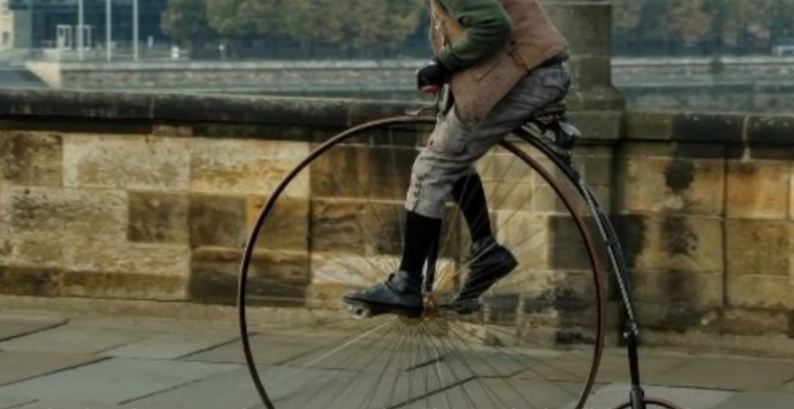The bicycle has developed into the versatile mode of transportation and recreation it is today because of the contributions of many inventors and enthusiasts. From the early wooden contraptions to the sleek, high-tech bicycles of the 21st century, the cycling journey shows human ingenuity and a passion for exploration on two wheels.
Cycling originated in Germany when Karl Drais built and tested the first two-wheeled movement machine in 1817. His invention, the draisine or running machine, was a precursor to the modern bicycle.
The term "bicycle" was coined later in the 1860s, and cycling as a sport officially began with a race near Paris on May 31, 1868. So, the cycling invention can be attributed to Karl von Drais in the early 19th century.
In this blog post, we will journey through the invention and development of cycling from the 19th century to the present day, exploring how this beloved activity has shaped and been shaped by the times.
When Was Cycling Invented: A Journey Through History

Cycling has become an integral part of modern life, serving as transportation, recreation, and a competitive sport. Its history is rich and fascinating, spanning over two centuries and evolving significantly with each passing era. Let's delve into this journey.
The 19th Century: The Birth of the Bicycle
- Birth of the Bicycle (19th Century)
- The bicycle emerged as a revolutionary invention for personal transportation.
- Draisine (1817)
- Invented by Baron Karl von Drais.
- Known as the "running machine" or hobby horse.
- A two-wheeled, steerable vehicle propelled by the rider's feet pushing against the ground.
- Pedal-Powered Bicycle (1860s)
- French inventors Pierre Michaux and Pierre Lallement added pedals to the front wheel of the draisine.
- This resulted in the creation of the velocipede (also called the "boneshaker").
- Featured a wooden frame and iron wheels.
- Known for its rough and uncomfortable ride on cobblestone streets.
- High-Wheeler or Penny-Farthing (1870s)
- Introduced a large front wheel and a smaller rear wheel for greater speed.
- The high center of gravity made it dangerous, with risks like "taking a header" (being thrown over the front wheel).
- Despite the dangers, it became popular and paved the way for further bicycle innovations.
20th Century: The Bicycle Revolution
- Turn of the 20th Century: Advancements in Bicycle Design
- Significant improvements made bicycles more practical and accessible.
- The safety bicycle (1880s) introduced:
- Equal-sized wheels.
- Chain drive.
- Lower center of gravity for safer and more comfortable rides.
- Pneumatic Tires (1888)
- Invented by John Boyd Dunlop.
- Air-filled tires provided smoother rides compared to solid rubber tires.
- Cycling as a Popular Sport (Early 20th Century)
- The Tour de France debuted in 1903:
- It is one of the world’s most prestigious cycling races.
- Covered over 2,000 miles across France.
- Highlighted cyclists' endurance and skill, elevating the sport globally.
- The Tour de France debuted in 1903:
- Mid-20th Century: Bicycle Evolution
- The introduction of geared systems made tackling varying terrains easier.
- The derailleur system:
- Invented in the early 20th century.
- Refined over the decades for smooth and efficient gear shifting.
- Beneficial for long-distance touring and competitive cycling.
- Post-World War II Era
- Cycling gained popularity as a leisure activity and mode of transportation.
- The bicycle boom in the 1960s and 1970s in the United States:
- Led to increased bicycle sales.
- Development of new models, including lightweight road bikes and rugged mountain bikes.
The 21st Century: The Modern Era of Cycling

- 21st Century: Renewed Interest in Cycling
- Driven by awareness of environmental issues, health benefits, and urban congestion.
- Modern bicycles are diverse, sophisticated, and accessible, catering to various needs and preferences.
- Rise of Electric Bicycles (E-Bikes)
- Integrated electric motor assists riders with hills and long distances.
- Makes cycling accessible to a broader audience, including older adults and individuals with physical limitations.
- Serves as a convenient and eco-friendly commuting alternative to cars.
- Technological Advancements in Bicycles
- Smart bicycles incorporate features like:
- GPS navigation.
- Fitness tracking.
- Smartphone connectivity.
- Enhances the cycling experience with valuable data and improved safety features.
- Smart bicycles incorporate features like:
- Urban Planning and Cycling Infrastructure
- Many cities have invested in:
- Dedicated bike lanes.
- Bike-sharing programs.
- Cycling-friendly infrastructure.
- Initiatives like car-free zones and bike-friendly public transportation promote cycling as a sustainable transportation mode.
- Many cities have invested in:
- Technology in Competitive Cycling
- Advances in aerodynamic designs, lightweight materials, and training methods enhance performance.
- Data analytics and wearable technology provide real-time performance monitoring and optimization for athletes.
Conclusion
From its humble beginnings in the 19th century to its modern-day innovations, cycling has continuously developed and adapted to meet society's needs and desires. Whether as a mode of transportation, a recreational activity, or a competitive sport, cycling has proven to be a timeless passion for millions worldwide.
The potential for further bicycle technology and infrastructure advancements is vast as we look to the future. With a growing emphasis on sustainability, health, and urban mobility, cycling is poised to play an even more significant role in shaping how we live and move.
The journey of bicycles through the 19th and 21st century is a testament to human ingenuity, resilience, and the enduring desire for freedom and exploration. Whether you are a seasoned cyclist or a newcomer to the world of cycling, there is always something new to discover and enjoy in this ever-developing journey.


